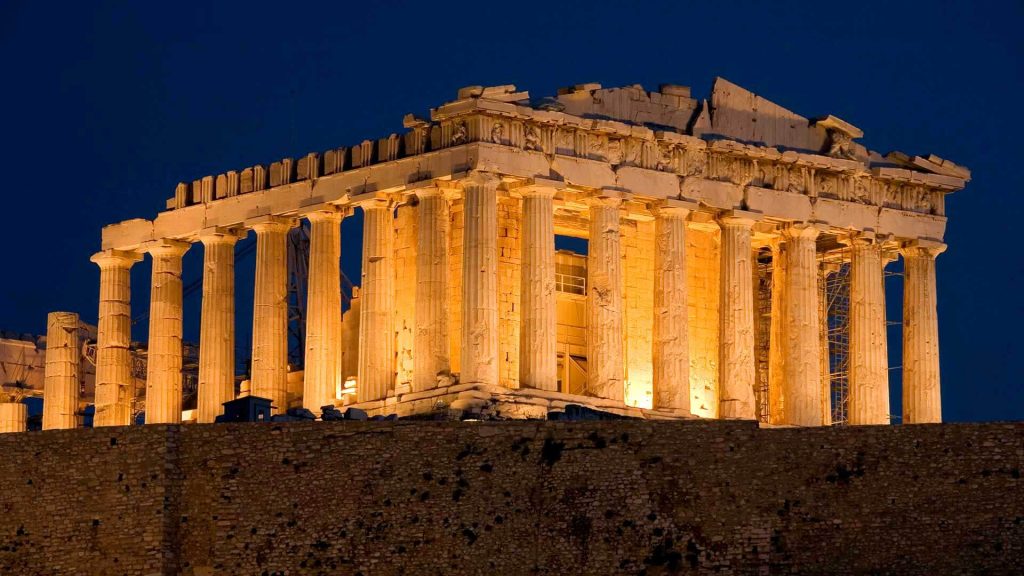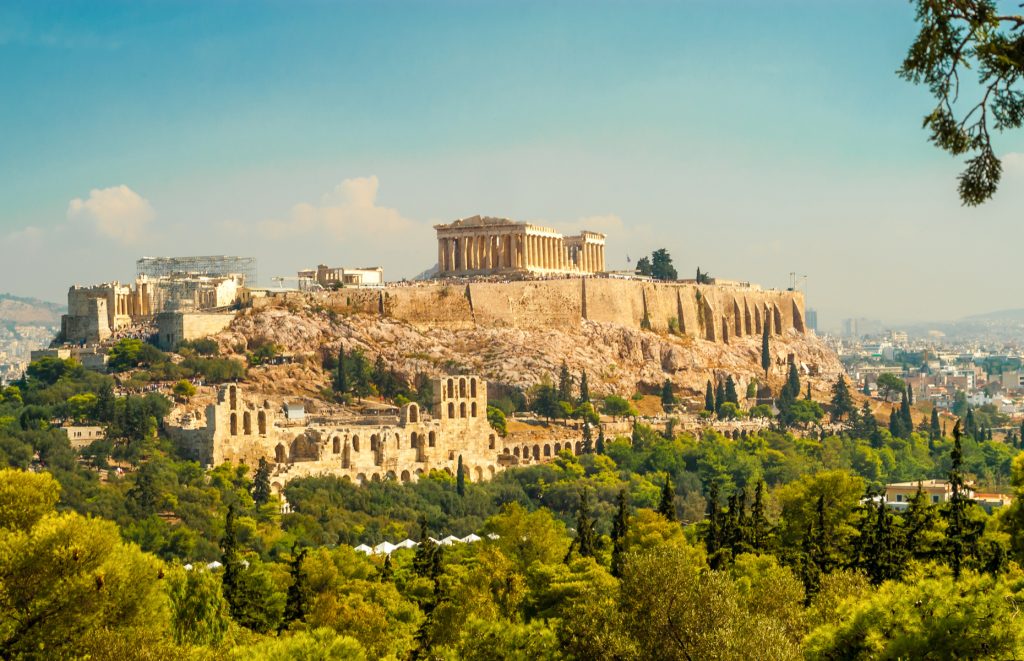In the Greek blue Aegean Sea, standing a thousand years after the wind and frost but still shining ancient buildings – the Acropolis. Located on the Acropolis hill in the center of Athens, this magnificent complex is not only an outstanding representative of ancient Greek civilization, but also a treasure of world cultural heritage. With its unique historical background, geographical location, architectural style and far-reaching influence on later generations, the Acropolis attracts countless tourists and scholars to explore its mysteries. This article will give you an in-depth introduction to the Acropolis, and take you to appreciate the charm of this ancient building complex.
I. Historical background and geographical location
1.1 Historical Background
The history of the Acropolis dates back to the 6th century BC, when Athens was in the golden Age of ancient Greece and became the cultural, political and economic center of Greece. The Acropolis was built to commemorate the great victory of Athens in the war against the Persian invasion, to demonstrate its supremacy, and to make it the most important sacred place and religious and cultural center in all of Greece. The construction of the Acropolis began in 447 BC and took several decades, designed and supervised by the famous architects Ictunus and Cariados. They used solid marble as a material, with the help of the advanced construction technology of the time, to create this magnificent complex.
1.2 Geographical Location
The Acropolis is located on the Acropolis hill in the center of Athens, about 150 meters above sea level, and covers an area of about 30,000 square meters. Its geographical location is advantaged, surrounded by cliffs on three sides, and there is only one passage to climb in the west. This terrain not only makes the Acropolis easy to defend and difficult to attack, becoming a natural defensive fortress, but also gives it a commanding momentum, allowing people to feel its majesty and magnificence from a distance. There are a series of ancient buildings on the Acropolis, including the Parthenon Temple, Athena Temple, Erechtheon Temple, etc. These buildings are scattered on the Acropolis platform, and together constitute a model of ancient Greek architecture.

Second, architectural style and architectural features
2.1 Architectural Style
The architectural style of the Acropolis reflects the essence of ancient Greek architecture, mainly Doric and Ionian columns, focusing on the harmony of proportion, symmetrical balance and simple and bright lines. These architectural styles were not only unique at that time, but also had a profound influence on later architecture. For example, the Doric order is known for its stout and upright character, while the Ionian order is known for its exquisite elegance. The buildings on the Acropolis make clever use of these columns to create buildings that are both strong and beautiful.
2.2 Architectural Features
Acropolis Gate: As the only access to the Acropolis, the Acropolis gate is not only part of the fortifications, but also an important part of the Acropolis architecture. The facade of the Acropolis gate is 18 meters high, the side is 13 meters high, and the momentum is magnificent. Its design cleverly integrates practicality and artistry, which not only ensures the realization of defense function, but also shows the unique charm of ancient Greek architecture.
The Parthenon: As the landmark building of the Acropolis, the Parthenon is famous for its magnificence and solemnity. The temple was built in 447 BC and took nine years to complete. With its back to the west facing east, it stands on three steps and is surrounded by 46 Doric columns. With a height of 10.5 meters and a base diameter of nearly 2 meters, these columns are neatly arranged and form a strong visual impact. Inside the temple is a statue of the goddess Athena, although the original statue no longer exists, but later generations can still imagine its glory through the remaining reliefs and murals.
Erechtheon Temple: Located north of the Parthenon, the Erechtheon Temple is famous for its elaborate design and unique caryatids. Built between 421 and 406 BC, this temple is a typical example of the Ionian style of Acropolis architecture. The east facade uses a traditional six-column facade design, while the south side is cleverly supported by six marble carved maiden pillars. These girls’ statues not only solved the problems of architectural aesthetics, but also became the object of imitation by later artists.
Athenaeum: The Athenaeum is one of the most important buildings on the Acropolis. The temple was built entirely from Pontelic marble near Athens, in an exquisite and magnificent style. The temple contains a statue of the goddess Athena, symbolizing wisdom, skill and the power of war. As the protector of Athens, Athena occupies an important position in ancient Greek mythology, so the temple of Athena also became an important place of worship and sacrifice for ancient Greeks.
Third, the historical status and influence of the Acropolis
3.1 Historical Status
The Acropolis of Athens occupies an important position in the history of ancient Greece. It is not only the political and religious center of Athens, but also one of the representatives of ancient Greek culture and art. During the ancient Greek period, the Acropolis witnessed the prosperity and development of Athenian democracy and became one of the symbols of the ancient Greek democratic system. At the same time, the buildings and sculptures on the Acropolis are also the crystallization of ancient Greek wisdom and creativity, showing the brilliant achievements of ancient Greek civilization.
3.2 Influence on society, culture and economy at that time
The construction of the Acropolis had a profound impact on the society, culture and economy at that time. First, the construction of the Acropolis provided a large number of employment opportunities for Athens, attracting free craftsmen from all walks of life to participate in it. This not only promoted the economic development of Athens, but also improved the living standards and social status of the citizens. Secondly, the architecture and sculpture on the Acropolis became examples of ancient Greek art and had a profound influence on later art. These works not only show the aesthetic concept and artistic talent of the ancient Greeks, but also provide a valuable source of inspiration for later artists. Finally, the existence of the Acropolis as a religious site and cultural center has attracted tourists from all over Greece and even the Mediterranean region to visit and worship. This not only promoted the cultural exchange and integration between Athens and other city-states, but also enhanced the international visibility and influence of Athens.
The value of the Acropolis in literature, art, history, etc
4.1 Literary value
The Acropolis of Athens occupies an important position in ancient Greek literature. Many works of ancient Greek literature refer to the Acropolis and its related myths and legends and historical stories. For example, the ancient Greek tragedian Aeschylus’ Prometheus Bound mentions buildings such as the Temple of Zeus and the Temple of Athena on the Acropolis. These literary works not only enriched the cultural connotation and historical background of the Acropolis, but also provided an important way for later readers to understand the ancient Greek civilization.
4.2 Artistic Value
The architecture and sculpture on the Acropolis is undoubtedly one of the masterpieces of ancient Greek art. These works not only show the architectural talent and sculpture skills of the ancient Greeks, but also reflect their pursuit and expression of beauty. The Doric columns of the Parthenon, the caryatids of the Erechtheon and the exquisite reliefs of the Athenaeum are examples of ancient Greek art. These works were not only widely praised at the time, but also had a profound impact on later art. Many European Renaissance artists drew inspiration from the architecture and sculpture of the Acropolis and used it in their own works.

4.3 Historical Value
As one of the representatives of ancient Greek civilization, the Acropolis of Athens has a very high historical value. It not only witnessed the prosperity and development of ancient Greek democracy but also carried the treasures and memories of ancient Greek culture. The buildings and sculptures on the Acropolis are not only the crystallization of the wisdom and creativity of the ancient Greeks, but also an important window for later generations to understand the ancient Greek civilization. Through the study of the Acropolis of Athens, we can better understand the characteristics and contributions of ancient Greek civilization and at the same time obtain inspiration and inspiration from it to provide beneficial reference for the development of today’s society.
V. The influence of the Acropolis on later generations
The influence of the Acropolis on later generations is manifold. First of all, in the field of architecture, the architectural style and building technology of the Acropolis provided valuable experience and inspiration for later architects. Many modern architects have taken inspiration from the architecture of the Acropolis and applied it to their own designs to create many excellent architectural works. Secondly, in the field of art, the sculptures and reliefs on the Acropolis have had a profound influence on later artists. These works not only show the artistic talent and aesthetic concept of the ancient Greeks, but also provide a rich source of creative materials and inspiration for later artists. Finally, in the field of history and culture, as one of the representatives of ancient Greek civilization, the Acropolis of Athens has played an important role in understanding the development of ancient Greek civilization and Western civilization. Through the study of the Acropolis of Athens, we can have a deeper understanding of the characteristics and contributions of ancient Greek civilization and at the same time draw wisdom and strength from it to provide beneficial reference for the development of today’s society.
Vi. Conclusion
As a shining pearl of ancient Greek civilization, the Acropolis of Athens not only carries rich historical and cultural connotation, but also shows the crystallization of ancient Greek wisdom and creativity. It has become one of the treasures of the world cultural heritage because of its unique historical background, geographical location, architectural style and far-reaching influence on later generations. In the days to come, let us cherish and protect this ancient and beautiful building complex so that it will continue to shine with the glory of human civilization!





















